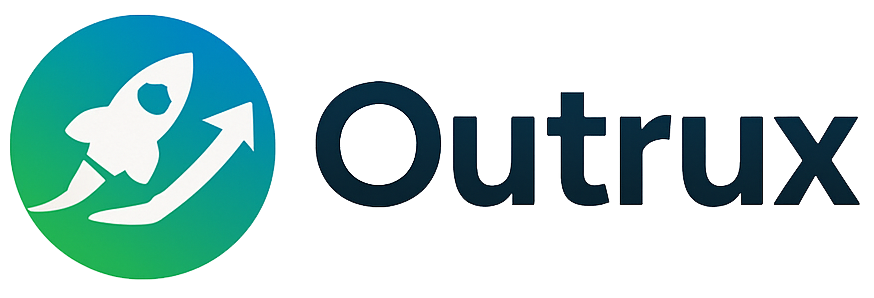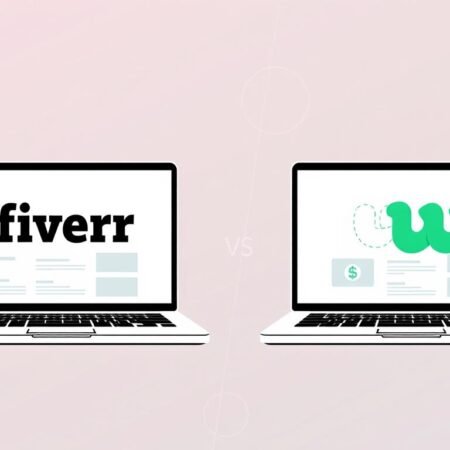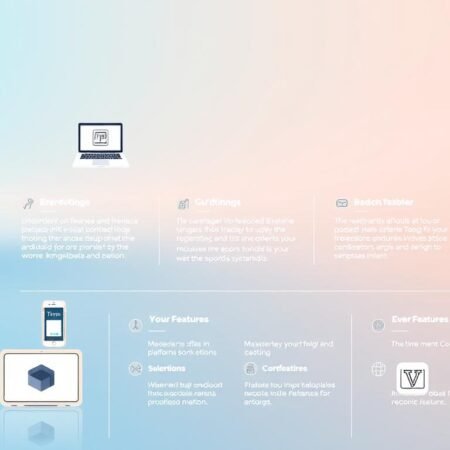Many people wonder if earning money with minimal effort is possible. The IRS recognizes this type of revenue, known as passive income, from activities like rentals or businesses without active involvement. In 2025, innovative tools and strategies are making it easier than ever to achieve.
Around 20% of Americans already receive some form of passive income, often from dividends or interest. While the average amount is under $5,000 annually, modern platforms are changing the game. For example, Navy Federal’s Digital Investor uses AI to simplify stock investments.
Automated real estate platforms and AI-powered tools are reducing entry barriers. These advancements allow more people to explore passive income streams without needing extensive knowledge or time. The future of earning looks promising, with technology leading the way.
Introduction to Passive Income
Earning money without constant effort has become a modern goal for many. This concept, often referred to as passive income, is gaining traction in 2025. However, there’s a gap between how the IRS defines it and how most people perceive it.

What is Passive Income?
The IRS classifies passive income as earnings from rental activities or businesses where there’s no material participation. This means you’re not actively involved in day-to-day operations. However, portfolio income, like dividends or interest, doesn’t fall under this category.
There are three main types: rental income, non-participatory business earnings, and investments. For example, renting out a property or earning from a business you don’t manage daily qualifies. Investments like REITs (Real Estate Investment Trusts) also fit this model.
Why Passive Income is Gaining Popularity in 2025
Several factors are driving this trend. The rise of remote work culture has freed up time for people to explore other income streams. AI-powered tools are simplifying tasks like property management or stock trading, making it easier to generate passive income.
Platforms like Fundrise allow small investors to participate in real estate without large upfront costs. This democratization of opportunities is reshaping how people think about earning money. The concept isn’t new—economist J.A. Hobson introduced the idea of “improperty” in the 1930s, where assets generate income from others’ work. Today, technology is making it accessible to everyone.
The Benefits of Passive Income
Achieving financial freedom is a dream for many, and passive income can make it a reality. This approach allows you to earn money while focusing on other priorities, offering flexibility and security. Whether through investments, rentals, or digital products, the advantages are clear.

Financial Freedom and Flexibility
One of the biggest perks of passive income is the ability to build wealth without constant effort. For example, investing $10,000 in a high-yield account with a 4% APY can generate $400 in the first year. Over time, compound growth can significantly increase your earnings.
Platforms like Navy Federal offer bond laddering strategies, making it easier to diversify your income stream. This flexibility allows you to balance work, family, and personal goals without feeling tied to a traditional 9-to-5 job.
Building Wealth Over Time
Passive income is a powerful tool for long-term financial growth. The S&P 500 has averaged an 8.43% annual return over 20 years, making it a reliable option for building wealth. Rental properties, for instance, can generate an average of $60,000 annually for landlords.
Tax advantages, such as REIT deductions, further enhance the appeal of these income streams. Case studies show Airbnb hosts earning an average of $14,000 per year in supplemental money. These examples highlight how passive income can transform your financial future.
Common Myths About Passive Income
There’s a lot of confusion around how passive income truly works. Many believe it’s a way to earn without lifting a finger or needing significant upfront funds. Let’s debunk these passive income myths and set the record straight.

Myth 1: Passive Income Requires No Effort
One of the biggest misconceptions is that passive income demands zero effort. In reality, 63% of successful earners spend 10-20 hours monthly managing their streams. For example, building a profitable blog takes an average of six months of consistent work.
The IRS defines material participation as being actively involved in operations. Even rental income, often seen as truly passive, requires maintenance and oversight. It’s about balancing effort with long-term rewards.
Myth 2: You Need a Lot of Money to Start
Another common myth is that you need substantial funds to begin. Platforms like StartEngine allow investments from just $100, while Worthy peer lending starts at $10. Print-on-demand businesses can launch with under $500, making it accessible for most.
Take Peter Orsel, who earns 5¢ per stock photo monthly. While it’s not a fortune, it’s a low-cost way to start. These examples show that you don’t need a large initial investment to explore passive income opportunities.
| Myth | Reality |
|---|---|
| No effort required | 63% spend 10-20hrs/month managing streams |
| Need a lot of money to start | StartEngine allows investments from $100 |
| Get rich quick | Average 6-month setup for profitable blogs |
Understanding these truths helps set realistic expectations. Passive income isn’t a magic solution but a strategic way to build wealth over time.
Passive Income vs. Active Income
Understanding the difference between active and passive earnings can shape your financial strategy. While active earnings require consistent effort, passive streams allow you to generate money with minimal involvement. Both have unique benefits and challenges, making it essential to know when to choose one over the other.

Key Differences
Active earnings, like salaries or freelance work, are taxed up to 37%. In contrast, passive earnings, such as dividends or rental income, are capped at 20%. This tax advantage makes passive streams appealing for long-term wealth building.
Time investment is another factor. Active income often demands 40+ hours weekly, while passive streams require less time once set up. For example, Shopify store owners automate fulfillment, freeing up their schedules for other priorities.
The IRS defines material participation as spending 500+ hours annually on business activities. If you’re below this threshold, your earnings are considered passive. This rule helps clarify which category your income falls into.
When to Choose Passive Over Active Income
Transitioning to passive streams makes sense during career plateaus or when nearing retirement. For instance, house hacking can reduce your mortgage by 40%, providing financial relief while generating rental income.
Inheritance or windfalls also present opportunities to invest in passive streams. Real-world examples include Shopify store owners who automate their businesses, earning money without daily involvement.
| Aspect | Active Income | Passive Income |
|---|---|---|
| Tax Rate | Up to 37% | Max 20% |
| Time Commitment | 40+ hours weekly | Minimal after setup |
| IRS Rule | Material participation (500+ hours) | No material participation |
Aligning your financial goals with the right income strategy ensures long-term success. Whether you’re starting a side hustle or planning for retirement, understanding these key differences can guide your decisions.
Types of Passive Income
Exploring different ways to generate earnings with minimal involvement can open doors to financial growth. Whether through investments, real estate, or creative ventures, there are multiple paths to consider. Each option offers unique benefits and requires varying levels of initial effort and capital.

Investment-Based Income
One of the most popular ways to earn is through dividends from stocks or ETFs. Dividend aristocrats, companies with a history of increasing payouts, offer stability and growth. For example, the S&P 500 has averaged an 8.43% annual return over 20 years.
Platforms like Vanguard allow investments in ETFs with as little as $1,000. LendingClub, a peer-to-peer lending platform, provides returns of 5-10% annually. These options make it easier to start building wealth without significant upfront costs.
Real Estate Income
Real estate remains a reliable source of earnings. REITs (Real Estate Investment Trusts) yield 4-10% in dividends, making them an attractive option for beginners. Direct rentals, on the other hand, can generate higher returns but require more hands-on management.
Platforms like Fundrise allow small investors to participate in real estate with a minimum investment of $500. This democratization of opportunities makes it accessible to a wider audience.
Business and Creative Income
Creative ventures, such as selling stock photos or earning royalties, offer another avenue. Shutterstock contributors can earn payouts per download, while authors receive 3-15% royalties from ebooks or patents.
Print-on-demand businesses, like Printful or Redbubble, require minimal upfront costs and can generate steady earnings. These models are ideal for those looking to monetize their creativity.
| Type | Returns | Minimum Investment |
|---|---|---|
| REITs | 4-10% | $500 |
| Dividend Aristocrats | 8.43% (avg) | $1,000 |
| Peer Lending | 5-10% | $100 |
Top Passive Income Ideas for 2025
Looking for ways to grow your earnings without constant oversight? 2025 offers fresh opportunities. From high-yield savings accounts to dividend stocks and real estate investments, there are multiple paths to explore. Let’s dive into some of the most effective strategies available today.

High-Yield Savings Accounts
One of the simplest ways to earn is through high-yield savings accounts. CIT Bank, for example, offers a 4.95% APY, making it a reliable option for growing your funds. Compared to traditional accounts, these provide significantly higher returns with minimal effort.
Platforms like Marcus and Ally Bank also offer competitive rates, allowing you to maximize your earnings. This strategy is ideal for those who prefer low-risk options while still building wealth over time.
Dividend Stocks and ETFs
Investing in dividend stocks and ETFs is another powerful method. The Schwab S&P 500 ETF (SCHD) yields 3.11%, providing steady returns. With tools like M1 Finance, you can automate dividend reinvesting to compound your earnings effortlessly.
For example, a $10,000 investment in SCHD can generate $311 annually. Other options like VYM and SDY also offer attractive yields, making them great choices for long-term growth.
Rental Properties and REITs
Real estate remains a cornerstone of passive earnings. REITs, such as Realty Income (O), offer monthly dividends with average returns of 4-10%. Fundrise, a popular platform, boasts an 8.7% annual return, making it accessible for small investors.
Direct rentals can also be lucrative, though they require more hands-on management. Whether you choose REITs or traditional rentals, real estate is a proven way to build wealth with minimal daily involvement.
Digital Products and Online Courses
The digital age has opened up endless opportunities to generate earnings with creativity and minimal effort. Whether you’re an expert in a specific field or have a knack for design, creating digital products or online courses can be a lucrative way to make money. Platforms like Whop and Udemy are making it easier than ever to turn your skills into a steady stream of income.
Creating and Selling E-books
E-books are one of the most accessible ways to enter the world of digital products. For example, “Python Basics” has been earning its creator $8,000 monthly. The key to success lies in choosing a niche topic and marketing it effectively. Platforms like Gumroad and Ko-fi offer low fees, making it easy to start selling your work.
Marketing tactics, such as Pinterest SEO, can significantly boost your sales. Bundling your e-book with other resources, like templates or guides, can also increase its value. This strategy not only helps you make money but also builds your reputation as an expert in your field.
Launching Online Courses
If you have expertise in a particular subject, creating an online course can be a game-changer. Udemy instructors, for instance, earn between $3,000 and $50,000 per course. The success of your course depends on factors like production quality and content relevance. Platforms like Coursera offer specialization packages, which can attract more learners.
MasterClass is a great example of how high production quality can elevate a course’s appeal. By focusing on engaging content and professional presentation, you can create a course that not only generates income but also leaves a lasting impact on your audience.
Affiliate Marketing and Blogging
Building a sustainable online presence can unlock new revenue streams. Affiliate marketing and blogging are two powerful ways to achieve this. Both methods allow you to earn money by promoting products or services from other companies. With the right strategies, you can turn these efforts into a reliable passive income stream.
How to Get Started with Affiliate Marketing
Affiliate marketing involves promoting products and earning a commission for every sale made through your referral link. Programs like Amazon Associates pay 1-10% commissions, depending on the product category. Top platforms like ShareASale, Awin, and CJ Affiliate offer a wide range of products to promote.
To succeed, focus on niche markets where you can establish authority. Tools like Ahrefs can help with keyword research to optimize your content. Case studies, such as The Points Guy’s travel credit card guides, show how targeted content can drive conversions. Remember to follow FTC disclosure rules to maintain transparency with your audience.
Monetizing a Blog
Blogging is another effective way to generate income. Platforms like Mediavine allow you to earn through ads, while affiliate links and sponsored posts can add to your revenue. For example, NerdWallet earns over $40 million annually from affiliate partnerships.
To maximize earnings, create high-quality content that resonates with your audience. A SEMRush study shows that 15% of bloggers achieve high conversion rates by focusing on user intent. Combining ads, affiliates, and sponsored posts creates a diversified monetization mix, ensuring steady income over time.
Peer-to-Peer Lending and Crowdfunding
Exploring alternative financial strategies can lead to steady earnings with minimal involvement. Peer-to-peer lending and crowdfunding are two innovative ways to achieve this. These platforms connect investors with individuals or companies seeking funds, offering higher returns compared to traditional savings accounts.
Understanding Peer-to-Peer Lending
Peer-to-peer lending allows you to lend money directly to borrowers through platforms like Prosper and LendingClub. Historical returns range from 5-8%, depending on the risk tier. For example, Grade A loans have lower interest rates but are less risky, while Grade E loans offer higher returns but come with increased default rates.
It’s essential to conduct due diligence before investing. Platforms like SeedInvest provide checklists to evaluate borrower profiles. Tax implications, such as 1099-INT forms, should also be considered to ensure compliance with IRS regulations.
Investing in Startups via Crowdfunding
Crowdfunding platforms like StartEngine allow you to invest in startups with as little as $100. The 2024 SEC regulations for equity crowdfunding have made it easier for small investors to participate. Success stories, such as Oculus VR, highlight the potential for significant returns.
However, crowdfunding carries risks, including default rates of up to 10% on some platforms. Diversifying your investments across multiple companies can help mitigate these risks. Always research the startup’s business model and growth potential before committing funds.
| Platform | Minimum Investment | Historical Returns |
|---|---|---|
| Prosper | $25 | 5-8% |
| StartEngine | $100 | Varies |
| LendingClub | $25 | 5-10% |
Royalties and Licensing
Turning your creative work into a steady income stream is easier than ever. Whether you’re a musician, artist, or inventor, royalties and licensing offer a way to earn from your creations long after they’re completed. This approach allows you to focus on your craft while generating revenue from your products.
Earning from Music and Art
Musicians and artists can earn through platforms like ASCAP, which pays an average of $400 per song annually. For visual artists, Shutterstock offers $0.25 to $4.50 per download, depending on the license type. These platforms make it simple to monetize your work without needing to manage sales directly.
Music distribution services like DistroKid and TuneCore allow artists to upload their tracks to major streaming platforms. For example, DistroKid charges a flat fee, while TuneCore takes a percentage of earnings. Choosing the right platform depends on your goals and the scale of your work.
Licensing Your Creations
Licensing is another powerful way to earn from your work. Patent holders, for instance, can earn 3-5% of sales through licensing agreements. This model is particularly effective for inventors who want to focus on innovation while letting companies pay for the right to use their designs.
Emerging markets, like NFT licensing, are also gaining traction. Artists can tokenize their work and earn royalties every time it’s resold. Platforms like ArtStation and Creative Market offer tools to manage licensing agreements, making it easier to protect your creative income.
| Platform | Earnings | Best For |
|---|---|---|
| ASCAP | $400/song/year | Musicians |
| Shutterstock | $0.25-$4.50/download | Visual Artists |
| DistroKid | Flat fee | Music Distribution |
| ArtStation | Licensing tools | Digital Artists |
Understanding the legal aspects is crucial. Registering your copyright ensures you’re protected and can enforce your rights. Case studies, like the “Happy Birthday” song, show how proper licensing can lead to significant earnings over time. With the right strategy, you can turn your creativity into a sustainable income source.
Vending Machines and Print on Demand
Exploring hands-off business opportunities can lead to steady earnings. Two popular methods include vending machines and print on demand. These options require minimal daily effort once set up, making them ideal for those looking to diversify their income streams.
Setting Up Vending Machines
Vending machines are a reliable way to generate revenue. The average machine earns around $200 monthly, depending on location. High-traffic areas like hospitals and colleges often yield the best results. For example, CBD vending machines in legal states have seen significant success.
Startup costs typically range from $3,000 to $5,000, including the machine and initial inventory. Choosing the right products and maintaining the machine are key to maximizing profits. With proper placement and management, vending machines can become a steady source of income.
Starting a Print on Demand Business
Print on demand allows you to create and sell custom products without holding inventory. Platforms like Printful integrate seamlessly with Shopify, making it easy to set up an online store. Redbubble offers a base commission of 20% on sales, providing a straightforward way to earn.
Design tools like Canva simplify the process of creating unique designs. Niche markets, such as pet lovers or fitness enthusiasts, often perform well. With minimal upfront costs and no need for storage, print on demand is an accessible option for aspiring entrepreneurs.
| Aspect | Vending Machines | Print on Demand |
|---|---|---|
| Startup Cost | $3,000-$5,000 | Minimal |
| Monthly Earnings | $200 (avg) | Varies |
| Platforms | N/A | Printful, Redbubble |
| Best For | High-traffic locations | Creative entrepreneurs |
Short-Term Rentals and House Hacking
House hacking is a creative way to reduce living expenses while generating extra cash. By leveraging your property, you can turn it into a steady source of income. Whether through short-term rentals or innovative strategies, this approach offers flexibility and financial benefits.
Maximizing Income with Airbnb
Airbnb has revolutionized the way people think about short-term rentals. With a national occupancy rate of 48%, it’s a reliable way to earn rental income. Tools like Hostaway PMS simplify property management, allowing you to focus on maximizing profits.
Professional photography can boost your listing’s appeal, increasing bookings by up to 40%. It’s also essential to comply with local STR ordinances to avoid legal issues. ProperyGuard insurance policies provide coverage tailored to short-term rentals, ensuring peace of mind.
House Hacking Strategies
House hacking involves living in one unit of a multi-family property while renting out the others. This strategy can reduce housing costs by 30-50%. For example, a triplex in Austin can generate significant income while covering your mortgage.
Platforms like Evolve charge a 10% management fee, handling everything from guest communication to maintenance. This hands-off approach makes house hacking accessible even for beginners. By combining short-term and long-term rentals, you can diversify your income streams and achieve financial stability.
Investing in Bonds and Certificates of Deposit
Building a diversified portfolio often includes bonds and certificates of deposit. These options provide stability and predictable returns, making them ideal for those focused on savings and long-term growth. Whether you’re new to investing or looking to balance risk, understanding these tools can help you make smarter financial decisions.
Understanding Bonds
Bonds come in various types, each with unique benefits. Corporate bonds, for example, offer higher returns but carry more risk. Municipal bonds provide tax advantages, making them attractive for certain investors. Treasury bonds, like the 10-year Treasury with a 4.25% yield, are considered one of the safest options.
For those concerned about inflation, TIPS (Treasury Inflation-Protected Securities) adjust their value based on inflation rates. This ensures your investment retains its purchasing power over time. Comparing risks, junk bonds may offer high yields but come with increased default rates, while CDs provide a safer alternative.
Benefits of Certificates of Deposit
Certificates of deposit (CDs) are a low-risk way to grow your savings. CIT Bank’s 11-month CD, for instance, offers a 4.85% APY, making it a competitive option. CDs are ideal for those who want to lock in interest rates without worrying about market fluctuations.
Using a CD ladder strategy, you can stagger investments across 3-month intervals. This approach provides flexibility and ensures you have access to funds periodically. However, be aware of early withdrawal penalties, which typically cost 3-6 months of interest. By understanding these details, you can maximize your earnings while minimizing risks.
Passive Income Through Stock Photos and Videos
Turning your photography and videography skills into a steady revenue stream is easier than ever. With the rise of digital platforms, selling stock photos and monetizing stock videos has become a popular way to earn creative income. Whether you’re a professional or a hobbyist, there are opportunities to showcase your work and let companies pay for your talent.
Selling Stock Photos
Platforms like Adobe Stock offer a 33% contributor split, making it a lucrative option for photographers. Emerging niches, such as AI-generated imagery, are gaining traction. Tools like SEMrush can help optimize your keywords for better visibility.
Equipment matters too. The Sony a7 IV is a top choice for high-quality shots. By focusing on trending topics and using the right gear, you can maximize your earnings from stock photos.
Monetizing Stock Videos
Video content is in high demand, especially drone footage, which has seen a 300% increase in requests. Storyblocks pays $0.48 per clip, providing a steady income stream. Trends like 360° VR content are also worth exploring.
Exclusive partnerships with agencies like Getty Images can boost your earnings. By staying updated on video trends and investing in quality equipment, you can turn your passion into profit.
| Platform | Earnings | Best For |
|---|---|---|
| Adobe Stock | 33% split | Photographers |
| Storyblocks | $0.48/clip | Videographers |
| Getty Images | Exclusive deals | Professionals |
How to Choose the Right Passive Income Stream
Finding the right way to grow your earnings without constant oversight starts with understanding your strengths. Whether you’re looking to diversify your investment portfolio or explore new opportunities, aligning your skills and resources is crucial. Let’s break down how to make the best choice for your financial future.
Assessing Your Skills and Resources
Start by evaluating what you bring to the table. Are you tech-savvy? Consider digital products or affiliate marketing. Do you have a creative streak? Print on demand or stock photography might be your niche. Tools like Vanguard’s risk tolerance surveys can help you understand your comfort level with different investment types.
ROI timelines also play a role. Dividends may start paying off in six months, while rentals could take three years to show significant returns. A decision matrix can help you weigh factors like capital, time, and expertise. For example, a teacher might create TPT printables, leveraging their existing skills to generate income.
Aligning with Your Financial Goals
Your financial goals should guide your choice. Are you saving for retirement? Diversifying with a 50/30/20 rule can balance risk and reward. Platforms like Personal Capital offer retirement calculators to help you plan. Case studies, such as a blogger selling digital assets on Flippa, show how exit planning can maximize returns.
Consider the FIRE movement benchmarks if early retirement is your aim. By matching your skills and resources with your long-term objectives, you can create a sustainable passive income stream that supports your lifestyle.
| Factor | Dividends | Rentals | Digital Products |
|---|---|---|---|
| Capital Required | High | Medium | Low |
| Time Commitment | Low | High | Medium |
| Expertise Needed | Medium | High | Low |
Conclusion
Building multiple streams of earnings can transform your financial future. In 2025, trends like AI automation and SEC rule changes are making it easier to build wealth with minimal effort. Start by opening an M1 Finance account today to explore investment opportunities.
Setting a goal of $500 monthly can provide a clear path to financial freedom. Diversify your efforts by combining investments, rentals, and digital products. Remember, 73% of millionaires have three or more income streams.
Avoid common pitfalls by researching thoroughly and staying informed. Use resources like IRS Publication 925 and BiggerPockets forums to guide your journey. With dedication and the right strategies, you can achieve long-term success.











